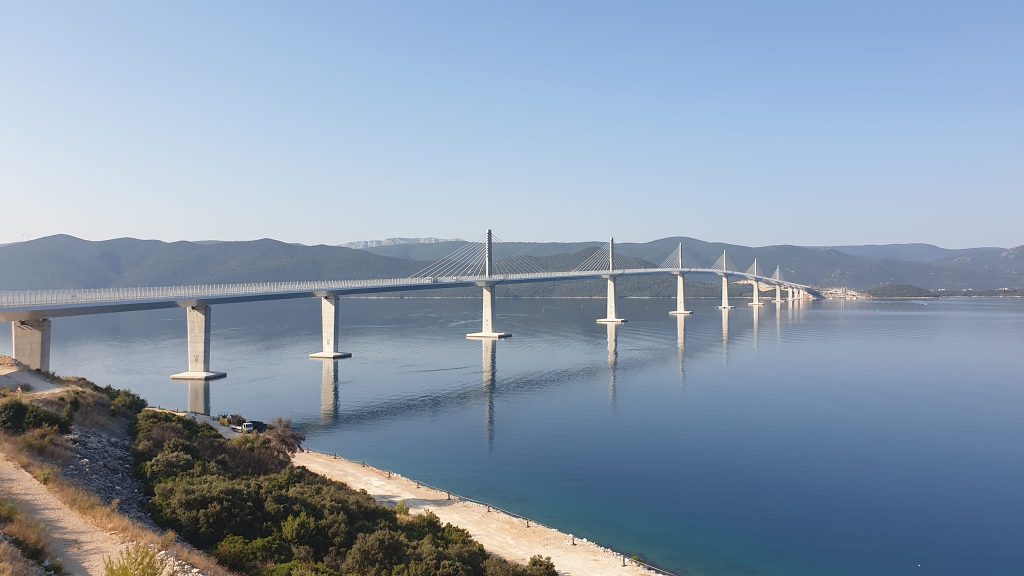As Faktograf/Sanja Despot writes, with both HDZ and SDP having played their respective roles, Peljesac bridge opens not only itself, but many questions about precisely who the most praise should be directed at. Competitive discussions about whose government is most responsible for its construction have started up again.
President Zoran Milanovic (SDP) stated that he started working on the bridge’s implementation back in 2012, claiming that it is indeed true that he questioned whether or not it was a profitable investment, but that he asked those questions during the period from 2005 to 2011, and not back in 2012.
“My team and I participated in the realisation of this bridge, practically in a 95 percent way. Everything was over when I handed over the post of prime minister,” he said and added that it all started with Ivan Sprlje, the former prefect of Dubrovnik-Neretva County, who spoke about the idea way back during his 1997 campaign.
When asked to comment on the president’s statement that SDP is responsible for this enormous project, Prime Minister Andrej Plenkovic said: “They’re one hundred percent responsible. They messed around to try to ensure that nothing came of it,”
It’s fairly easy to find Milanovic’s quote from back in July 2015 on the Croatian Government’s website, on the eve of the parliamentary elections that took place that year. Milanovic then said that “Peljesac bridge will be built regardless of who wins the elections”, and that, as he said, “no one can blow it anymore, and they blew it for five years straight”.
It’s worth noting that the European Union (EU) didn’t simply decide out of nowhere to provide the funds for the construction of the bridge back in 2016 when HDZ returned to power.
Back in July 2015, then Prime Minister Milanovic, together with ministers Branko Grcic and Sinisa Hajdas Doncic, presented the project to connect the extreme south of Croatia with the Peljesac bridge, saying that the idea of a bridge was chosen as the best option by those who decided on it all in the European Union.
The then Minister of Maritime Affairs, Transport and Infrastructure, Hajdas Doncic, said that the Peljesac bridge construction project inherited from the previous government was oversized and too expensive, which is why Milanovic’s government terminated the contracts with the contractors in 2012. He added that after that, through OP traffic in 2007-2013, they were provided money for the pre-feasibility study and said that in parallel, through OP Cohesion and Competitiveness, in the part concerning transport for the financial period 2014-2020, funds were provided for connecting the isolated part of the Republic of Croatia (southern Dalmatia) to the rest of the country. Through European Union funding, Croatian Roads (Hrvatske ceste), as the project holder, contracted the feasibility studies.
On that occasion, Hajdas Doncic recalled that several connection solutions were considered, stressing that as the best solution, the Peljesac bridge project with all of its connecting roads received the best marks and was identified as a project that would meet all the set goals.
“The bridge can apply for cash from European Union funds on the condition that we prepare the studies that show that this is the best solution”, said the Minister of Foreign Affairs Vesna Pusic back in 2012, before Croatia formally entered the European Union on July the 1st, 2013, which was also during the mandate of former Prime Minister Zoran Milanovic. Pusic had then hoped that it could be financed from the IPA pre-accession fund.
In 2013, a preliminary feasibility study was carried out, financed by the European Commission (EC), which concluded that the best solution of all options for connecting the extreme south of the country was indeed a bridge.
During 2014 and 2015, once again during the mandate of Milanovic’s government, a feasibility study was carried out, which was financed by EU funds, and which also confirmed that the best solution was the construction of Peljesac bridge. Then, at the end of 2016, confirmation was received from the EU that the project was ready for application for co-financing in the maximum amount of 85 percent. Finally, on June the 7th, 2017, a formal decision was made by the European Commission to co-finance the construction of the huge structure with 357 million euros.
In the spring of 2018, the then HDZ Minister of Regional Funds, Gabrijela Zalac, signed the contract on the construction of the bridge, which was worth over 2 billion kuna, between Croatian Roads and the Chinese consortium led by the China Road and Bridge Corporation.
Regarding the part of Milanovic’s statement that Ivan Sprlje, the late SDP prefect of Dubrovnik-Neretva County, was the initiator of the idea of building the bridge, it should be noted that SDP and HDZ are persistently competing for the right of precedence, each with their own arguments. SDP claimed that Sprlje was the first to present the idea in his campaign, that is, they refer to the exact information that he was the first to draw up the bridge in the spatial plan, and from HDZ, they highlight the role of Luka Bebic, who was the first to speak about it in Parliament for HDZ in 1998.
It’s a fact that in the years leading up to the moment when Peljesac bridge finally opens, SDP wasn’t entirely sure whether or not it should dive in with that project, until the party took over the government, that is. It’s also true that former HDZ Prime Minister Ivo Sanader “rather emptily” started his work on the bridge as part of his PR campaigns.
For more, make sure to check out our dedicated politics section.










